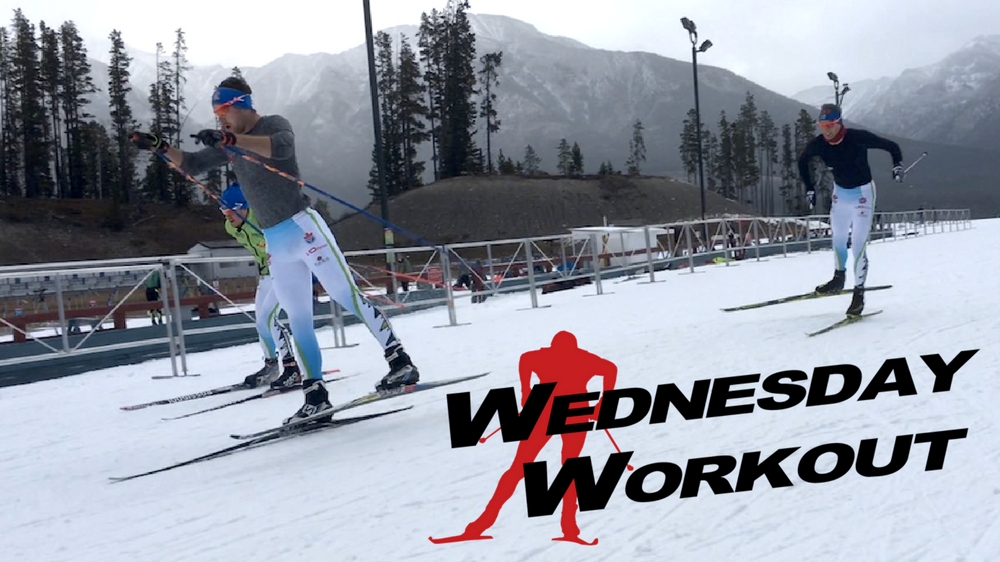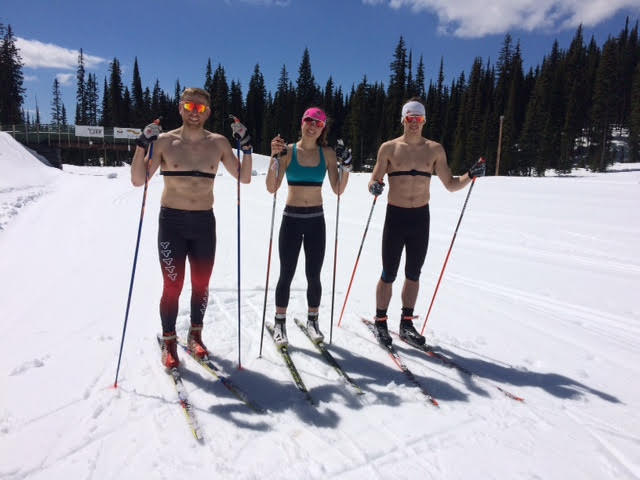
Evan Palmer-Charrette, of Thunder Bay’s National Team Development Centre (NTDC), had an eventful 2016/2017 season, starting with compartment syndrome surgery in the summer to remedy an issue that had plagued him for four years, his first U23 World Championships, his first World Cup races in Quebec, and his first national title.
Palmer-Charrette finished the season ranked second in the overall NorAm standings behind Russell Kennedy (Canmore Nordic/Team R.A.D.) after notching four NorAm podiums. One of those included his third-place finish in the classic sprint at Canadian Ski Nationals, behind two U.S.-based university skiers, which made him the top Canadian.
“Awesome to be Canadian champion, but a surprise for sure in a classic sprint,” he told FasterSkier at nationals, reflecting his preference for distance racing.
A week later at SuperTour Finals in Fairbanks, Alaska, Palmer-Charrette placed second in the skate sprint behind winner Logan Hanneman of Alaska Pacific University. He was FasterSkier’s pick for Canadian Continental Skier of the Year and turned 23 this past Sunday. Palmer-Charrette is currently testing at the Canadian Sport Institute Ontario in Toronto and plans to spend another season with the NTDC in Thunder Bay. He started the new training year with an on-snow volume camp at Sovereign Lake in British Columbia.
He submitted the following workout regarding race-prep intensity.
***

“From an early start, most everyone knows it is crucial to warm up well the morning of a race to experience each energy system before you put yourself through it during the real deal. I have heard a number of junior athletes surprised to hear that it’s a common practice to put in an intensity workout within a day or two of a race, I was the same as a junior, I would always do some sprints and a bit of speed but nothing with serious structure that I tracked and replicated like the intensity I would do in my race morning warm-up.
Race prep intensity (RPI) is a great way to get the body fine-tuned for a race weekend, especially in the early season when you don’t have as much racing and intensity under the belt. Now, this is not an exam-style cram before the test workout to try and get in better shape two days out, just something light much like you would do the morning of a race. More often than not, you will have traveled for a ski race and a light intensity is a great way to shake the body out and get a feel for a new race course skiing it the same speed you will in a race.
The Warmup
Start out with an easy recovery pace to begin the ski. Closing in on a race weekend, there are very minimal benefits for pushing the pace while skiing easy, but overdoing it can leave the body feeling fatigued. During the warmup, pick up the pace to a point where it feels comfortable, well below threshold, but enough of an increase that you feel like you are gliding rather than shuffling and apply some power to feel the snap in your limbs. I like to do 2-4 minutes of Zone 2 to get the body ready.
The Workout
- Zone 3: If your first race or the big race is a sprint, I like to take two laps at a moderate Zone 3 effort. Trying to ski the course as smooth as I can and getting a sense for where the technical sections are that I will use for the following intervals of the workout. If you are prepping for a distance race, I like to do my 5-6 minutes of Zone 3 on what I think will be the most challenging section of the course, getting a feel for cresting the big A-climb into a technical downhill without perfectly rested legs.
- Zone 4: This is the most variable portion of the workout. As I mentioned earlier, depending on the time of year I might adjust my RPI workout to how I am feeling — this is generally the section that takes on the change. By the latter half of the race season, if I’m going into a multi-race weekend I’ll skip the stage altogether, however prior to Christmas, I have added more repetitions or duration.
- Sprints: 3 x 30 seconds is really just an example, but a good amount to put some snap in the legs and get an idea of what the upcoming course will throw at you. These qualifier-pace sprints are best done on the technical sections of the course that really allow you to get a feel for how a tricky transition or corner will ski while in a race situation.
The Cool Down
Wrap the workout up with a good cool down to flush out the legs making sure to get in at least 25-30 minutes. I like to throw in a few Zone 2 surges if my legs were not feeling great during the intensity to try and flush them out a bit more. If it’s cold, I’ll change my top I wore during the workout, there is nothing worse than getting a chill and catching a cold a day or two before a race.”




